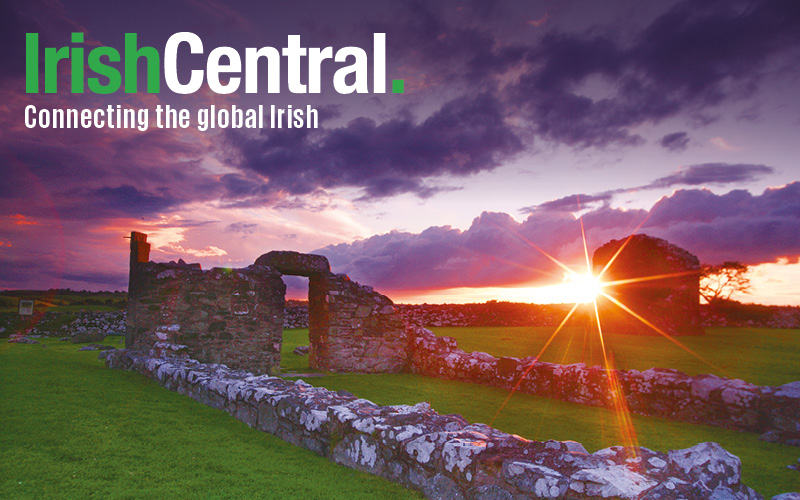The months of waiting for the Irish political classes are finally over. After flirting with a late 2015 general election and then indicating that it would be held in early 2016 without revealing the date, the Taoiseach (Irish prime minister) has dissolved Dáil Éireann (the lower house of Irish parliament) and announced that the general election will be held on Friday, 26th February.
The Irish people will elect 158 members of the next Dáil in 40 constituencies. These figures are down from 166 members and 43 constituencies after a redrawing of the electoral map since the last general election in 2011.
A lot has been said and written already about the “nitty gritty” of this election. Will the current Fine Gael-Labour governing coalition be returned to power in its present form or will they need support from other political parties, groupings and/or independents? How will the historically dominant power in Irish politics, Fianna Fáil, fare in the wake of its 2011 meltdown and its still mediocre standing in the polls? How much of a breakthrough will Sinn Féin make in this election? Which independents might hold the balance of power in the next Dáil? These questions, and myriad variants thereupon, have been and will continue to be the subject of speculation.
Separate questions of a different sort that may prove crucial to the results of this general election are also being asked and answered by pundits. Might the vexed issue of abortion, in light of a growing campaign online and elsewhere to repeal the 8th Amendment (the “pro-life amendment”), be a bigger issue for candidates than ever before? What role might social media and the reality that a far higher percentage of the electorate now consumes information primarily online play both in candidate strategies and election coverage? What impact could the new gender quotas, which effectively mandate that 30% of the candidates fielded by Irish political parties are women, have on a male-dominated parliament?
While these are all vitally important matters, it is worth considering the overarching context in which the upcoming campaign will play itself out. And this context is shaped by the fact that, although the leading economic indicators suggest to most observers that Ireland is in the midst of an economic recovery for which the country’s leaders have been celebrated internationally, this recovery is definitely not being felt by all.
Indeed, the rhetoric that has been employed by many politicians in the US on the left, and some on the populist right, that there are now “two Americas” is not entirely misplaced here. Sadly, to a possibly unprecedented extent, there are now “two Irelands.”
The economic recovery is felt strongest in and around Dublin. It is also evident in other cities like Galway and Cork. Property values, though not soaring higher than the grossly inflated heights they reached in the middle of the last decade, have recovered. Both public and private sector workers generally feel more optimistic about their prospects, and they have just benefitted from the first budget in some years that did not include further tax increases and/or wage cuts. Anecdotes abound from small business owners and self-employed men and women that “there’s definitely been an uptick.”
Read more: America could learn a thing or two from Ireland’s election process
In parts of rural Ireland – have not experienced the benefits of economic recovery. Boarded up shopfronts, little opportunity in many localities and high rates of emigration remain facts of life. And notably, notwithstanding genuine efforts, well-grounded appeals on a number of fronts to multinational corporations for foreign direct investment outside the major cities have fallen on often deaf ears.
A pre-election Newstalk radio segment on the Dublin Southwest constituency indicates that these “two Irelands” can exist contiguously. The constituency includes both affluent and working class areas. Those interviewed in the economically better off districts of the constituency cited the significant cost of child care and the harsh impact of the universal social charge (a tax measure introduced during the throes of the economic crisis to stabilise public finances) as key issues for them. At least in a relative sense, it’s not altogether glib to describe these as “first world problems.”
Conversely, as a community activist in an economically deprived area pointedly said, “there is absolutely no recovery here. There are no decent jobs whatsoever – other than Job Bridge” (a government programme providing an extra €50 a week in addition to the ordinary social welfare payment to people working in approved jobs). The despair in his voice was unmistakable.
Unsurprisingly, and as by-elections since 2011 for vacant Dáil seats and 2014’s European and local elections have borne out, there is a consequent political division between the “two Irelands.”
Pat Leahy, political editor of the Sunday Business Post, writes that approximately 70% of the Irish people are broadly pleased with the economic recovery and not wholly displeased with the political status quo. He believes that about 30% are extremely unhappy with the economic and political status quo and are looking to Sinn Féin and to independents focused on local issues and/or espouse left wing views.
Read more: Irish election hard to call ahead of 3-week, low-budget campaign
Leahy’s numbers are probably not too far off the mark. To them, however, must be added the factor that many people who would acknowledge there is an economic recovery simultaneously believe that it is the Irish people, not the governing Fine Gael or Labour parties, who are responsible for it. Indeed, they would criticise both parties for having broken promises they made in 2011.
At the same time, polls indicate that many voters who are not struggling economically, especially those living in and around the capital city, will never forgive Fianna Fáil for, as they see it, “wrecking the country” and causing the economic crisis. Where the votes of those people – who are reasonably comfortable economically, yet are not terribly enamoured of Fianna Fáil, Fine Gael, Labour, and particularly not of Sinn Féin – ultimately go will be critical to the election’s outcome.
This is the overarching context for general election 2016. It’s complicated, to put it mildly. And it will help frame how the parties and candidates will wage their campaigns and how the votes will ultimately be cast and tallied. I’ll return to this, the “nitty gritty” of electoral politics, closer to the 26th.
* Larry Donnelly is a Boston attorney, Law Lecturer at NUI Galway and regular contributor to IrishCentral.com and other media outlets on US and Irish politics, current affairs and law. You can follow him on Twitter for the latest on this year’s Irish and US elections @LarryPDonnelly.




Comments